
On this month's Morbidly Fascinating Page:
Inside Italy's Sacro Bosco, the Garden of Monsters
(a photo gallery of the giant statues at the bottom of this page)
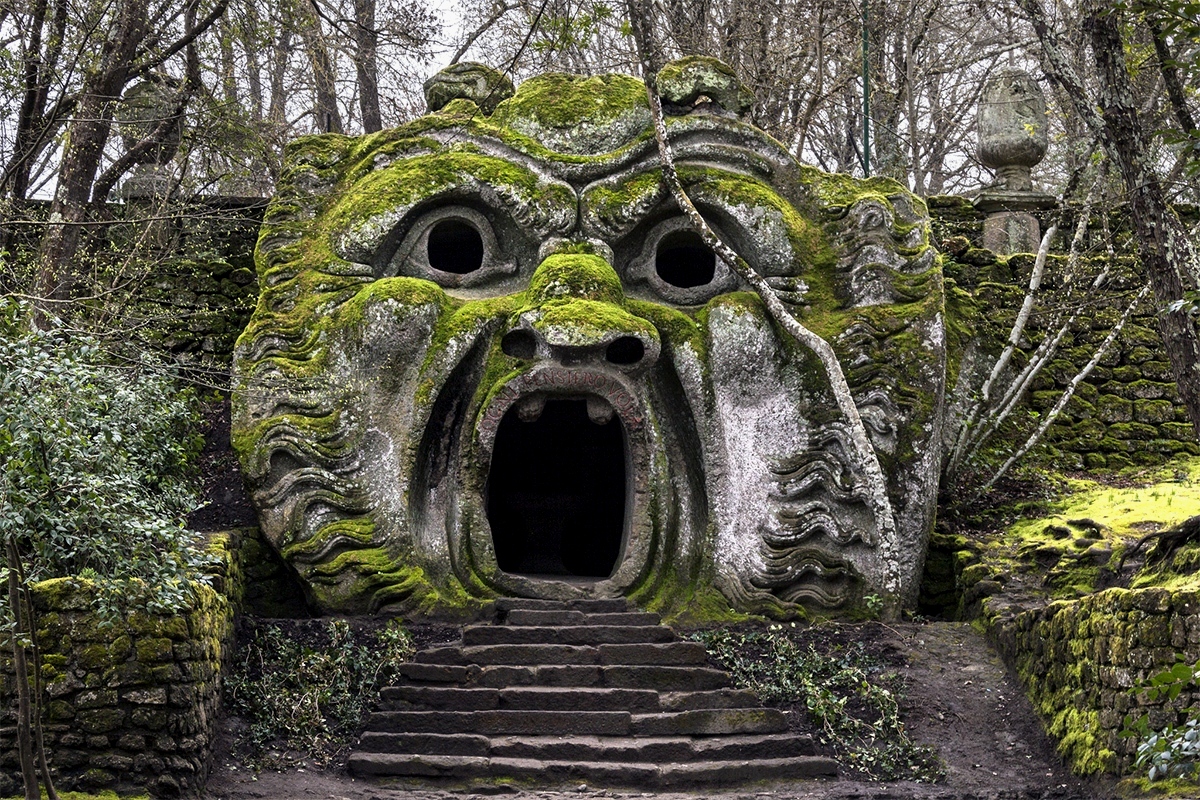
A sculpture known as the Hell Mouth is one of several dozen fantastical creations dating to the sixteenth century that line the paths of a park called the Sacro Bosco, or Sacred Wood, near the central Italian town of Bomarzo. The Hell Mouth was designed to serve as an alfresco dining room, with its tongue forming the table. The so-called Mouth of Hell is the Sacro Bosco's most famous sculpture.
Visiting the Sacro Bosco (Italian for Sacred Grove), a 16th-century garden in Bomarzo, Italy, is no ordinary walk through the park. The seven-acre site’s sculpted monsters, open tombs and dramatic depictions of supernatural combatants make the experience more akin to braving a Renaissance version of a haunted house. Visitors can wander through a tilted building, run away from a giant gaping mouth and—if they manage to get past Cerberus, the three-headed dog who guards the gates of the underworld—descend into hell.
The Sacro Bosco’s colossal stone statues are frightening to behold. But what makes this garden extra eerie is that no one knows for sure why monsters haunt these woods. “No receipts, account books or commission documents survive to tell us about the Sacro Bosco’s creation,” says John Garton, an art historian at Clark University and the co-author of an upcoming bookabout the garden. Pier Francesco Orsini, the duke who commissioned the Sacro Bosco in the mid-1500s, left no explicit clues.
The garden is situated in a wooded valley bottom beneath the castle of Orsini, and it is populated by grotesque sculptures and small buildings.
The primary purpose of Sacro Bosco was to serve as an expression of its creator Pier Francesco Orsini's complex personality, intellectual interests, and profound grief following the death of his wife, Giulia Farnese. Orsini created the garden to provide an escape from sorrow by building a mystical world populated by bizarre sculptures inspired by mythology and literature.
To find the main entrance to Sacro Bosco, locate the park in Bomarzo, Italy, and look for the two worn sphinxes that mark the original entrance. While there are other entry points or "back passages" to the gardens, this is the primary and historically significant main entrance.
Sacro Bosco is open to the public daily, year-round, but requires an admission fee. Visitors must purchase tickets to enter and explore the 16th-century garden filled with fantastical stone sculptures. Operating hours vary seasonally, so checking the official website or a reputable tour provider is recommended for current times.
To get tickets, go HERE
Gallery of statues inside Sacro Bosco
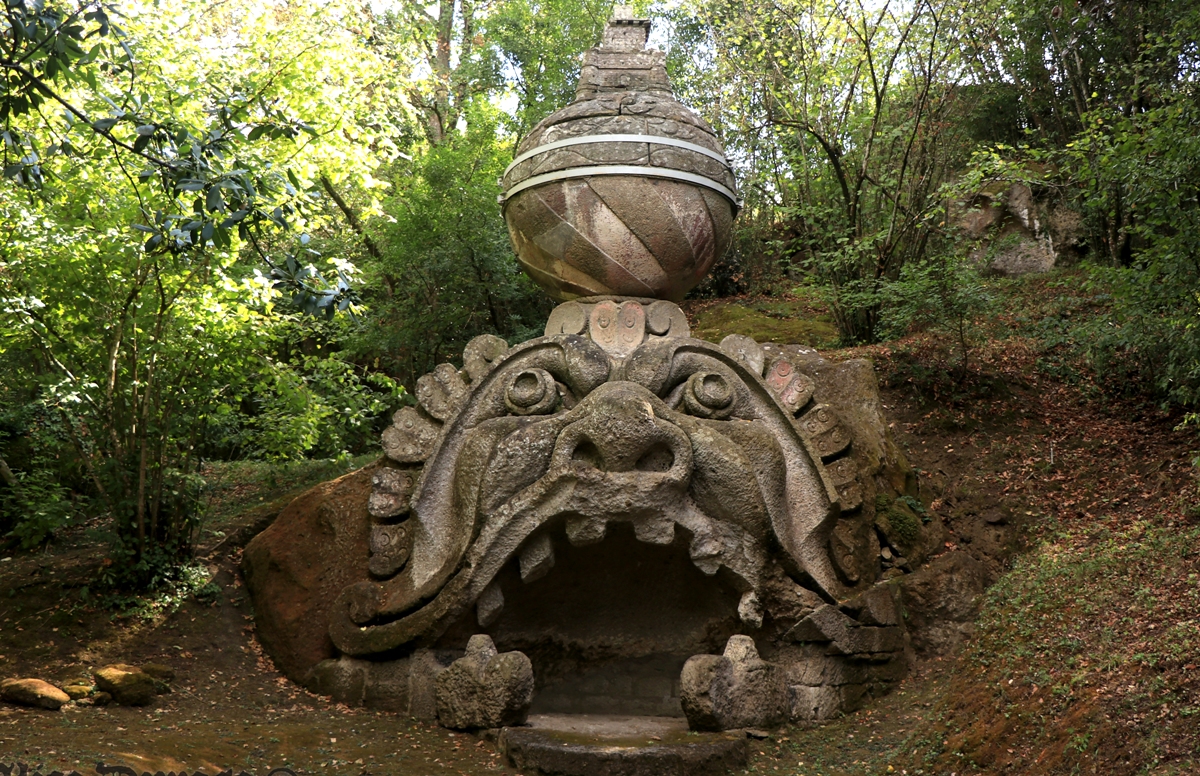
The monumental Proteus Glaucus, a fisherman transformed into a sea god
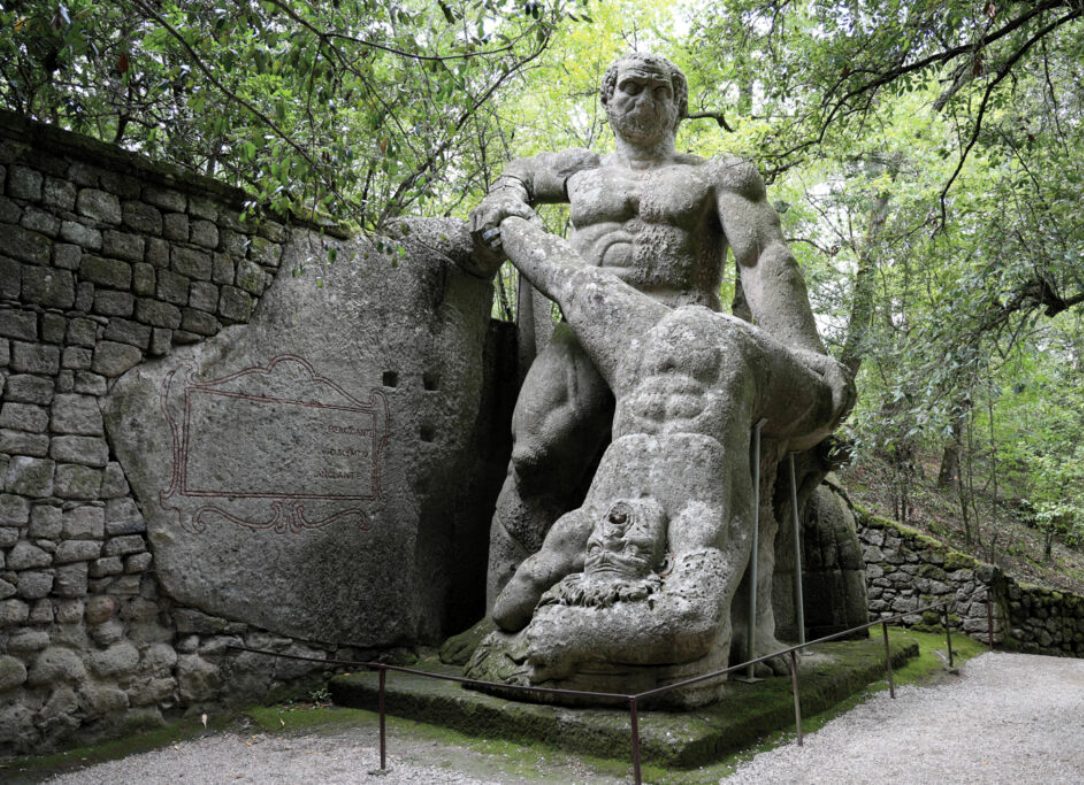
A pair of giants engaged in a vicious wrestling match may have been inspired by Orlando Furioso, a 1532 epic poem in which the enraged protagonist tears a woodsman in two
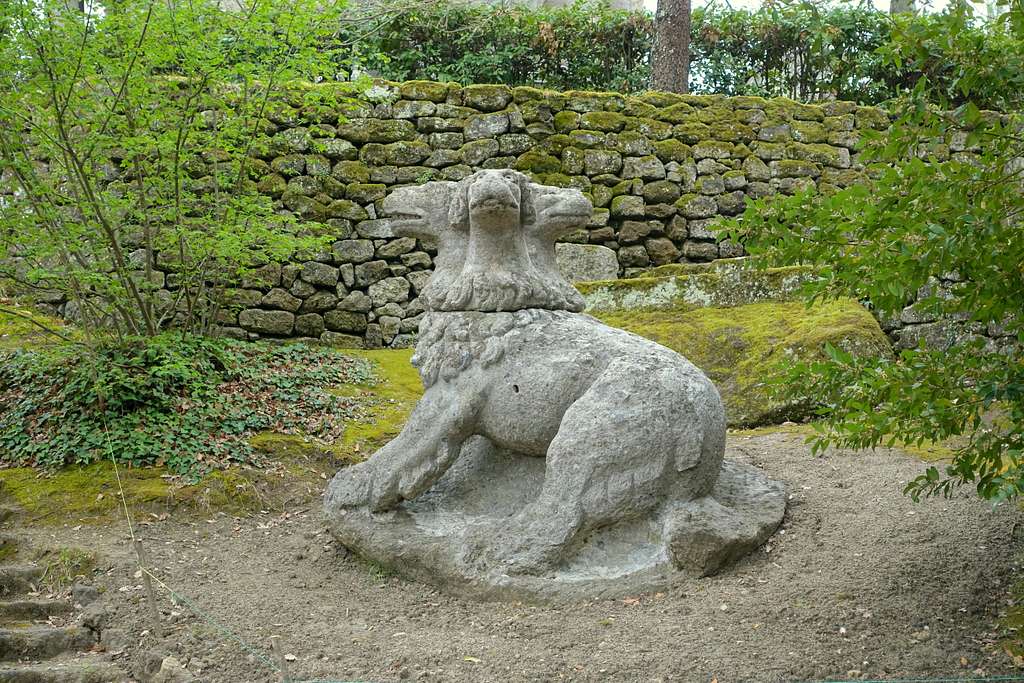
A statue of Cerberus, the three-headed guard of the gates of the underworld
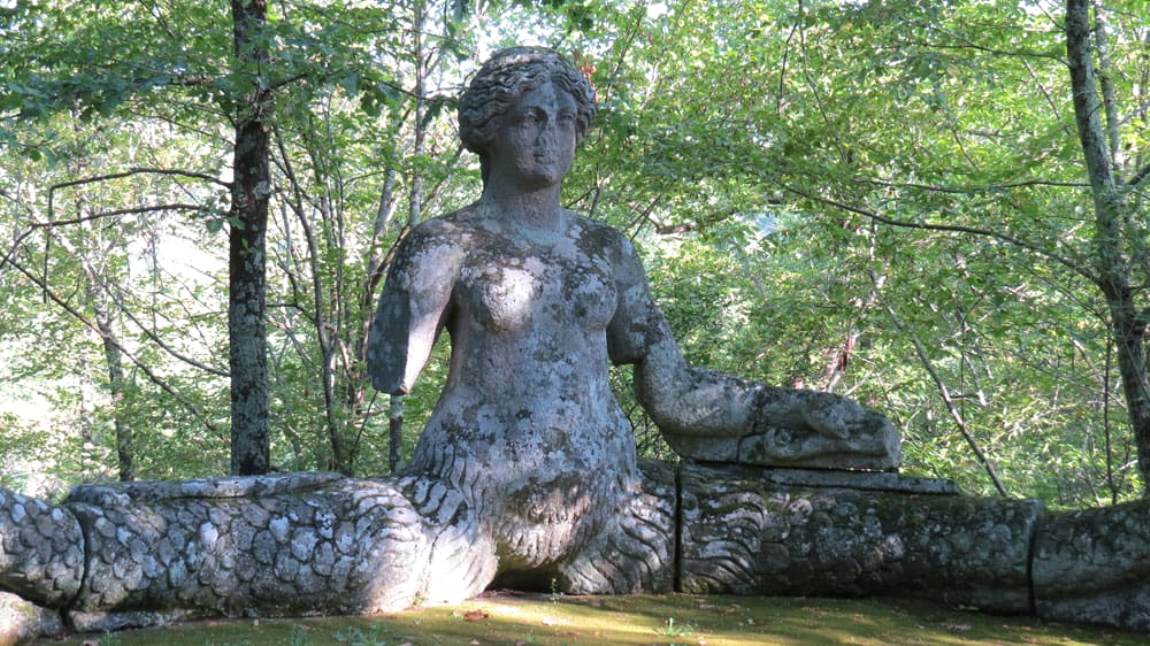
Echidna, a half-woman, half-snake monster from Greek mythology
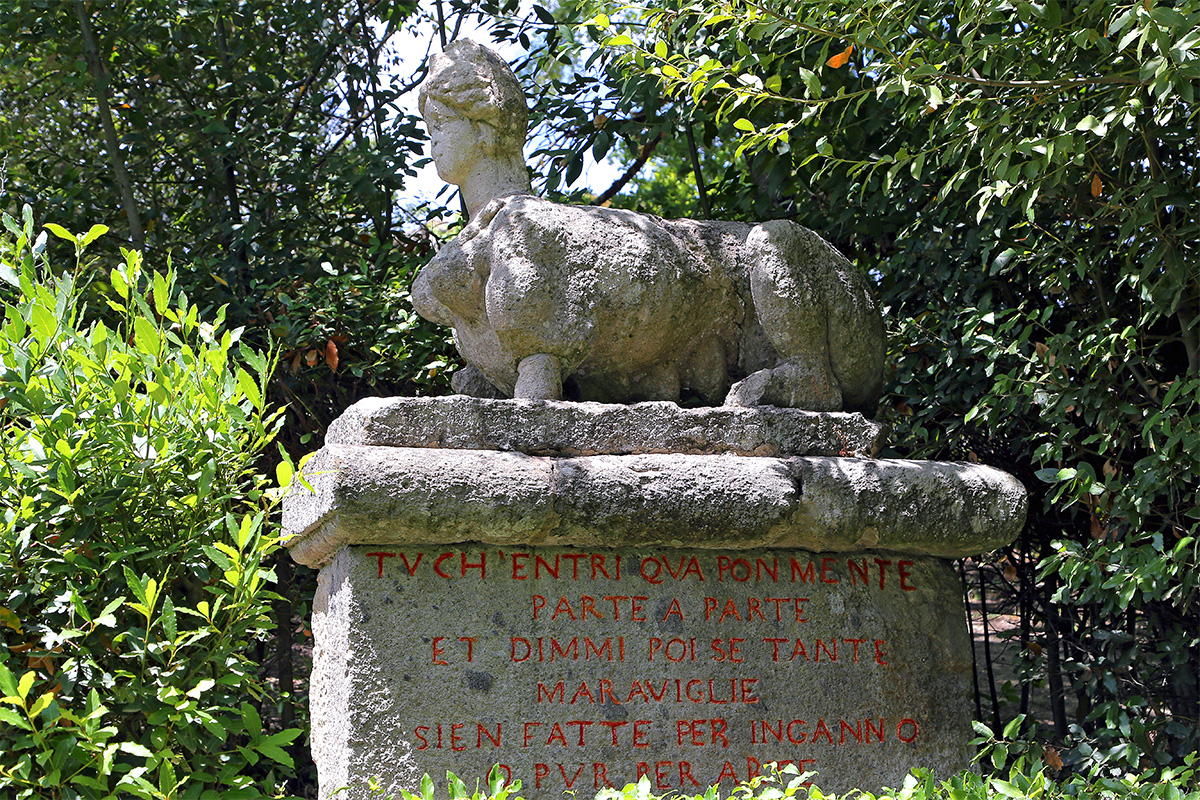
A statue of a sphinyx
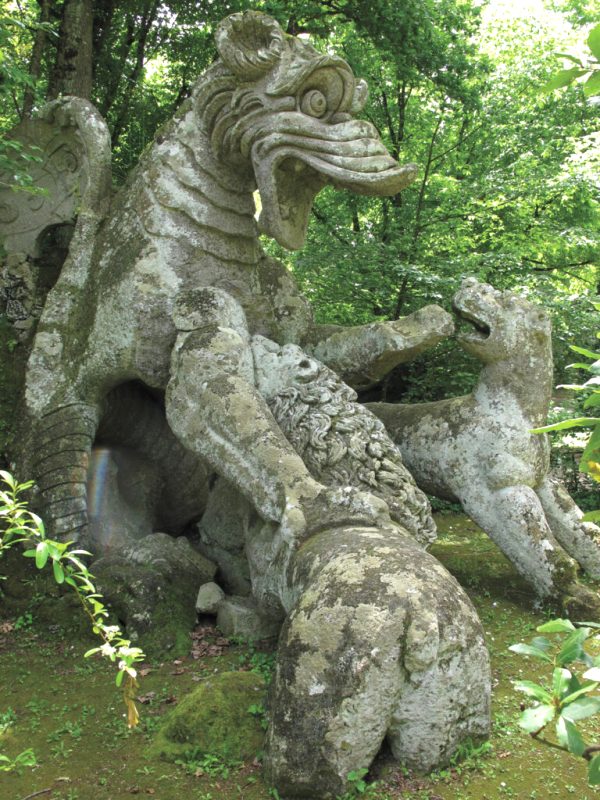
Two lions attack a giant dragon, one of several scenes in the Sacro Bosco that depict violent encounters
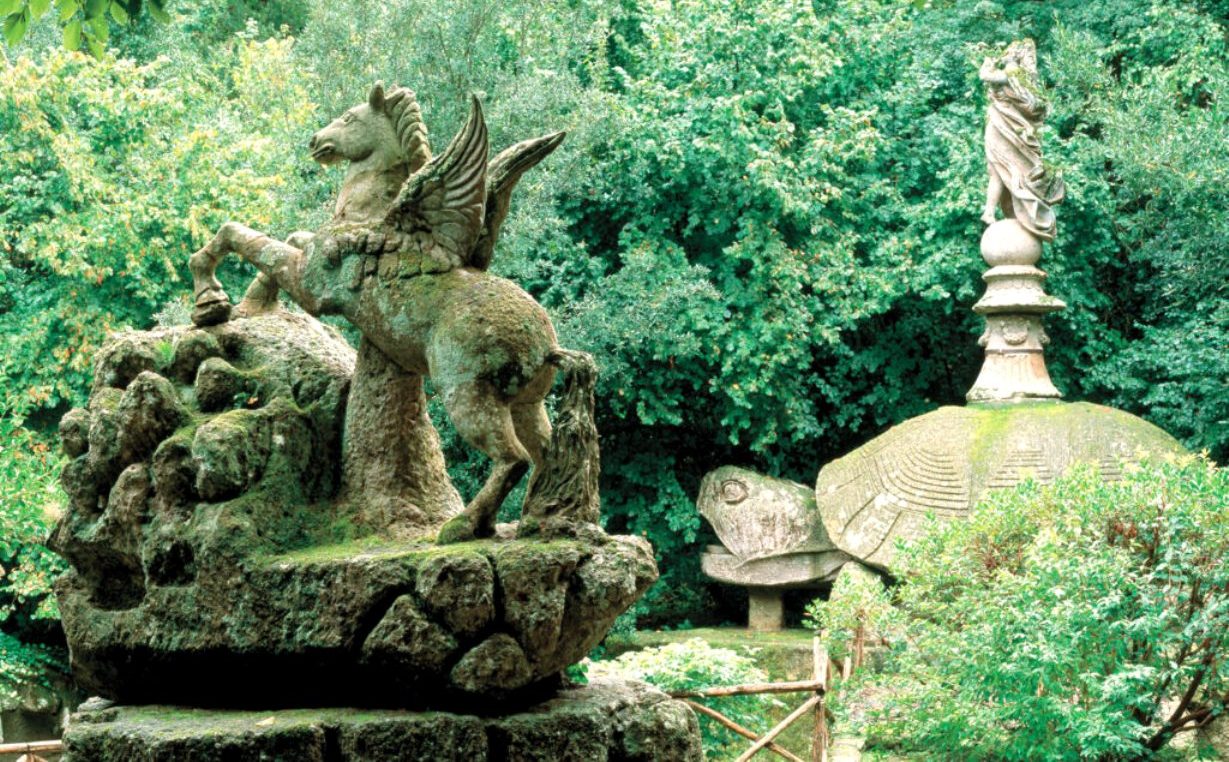
A sculpture of the winged horse Pegasus was originally a fountain. Nearby, a giant tortoise carries a female figure
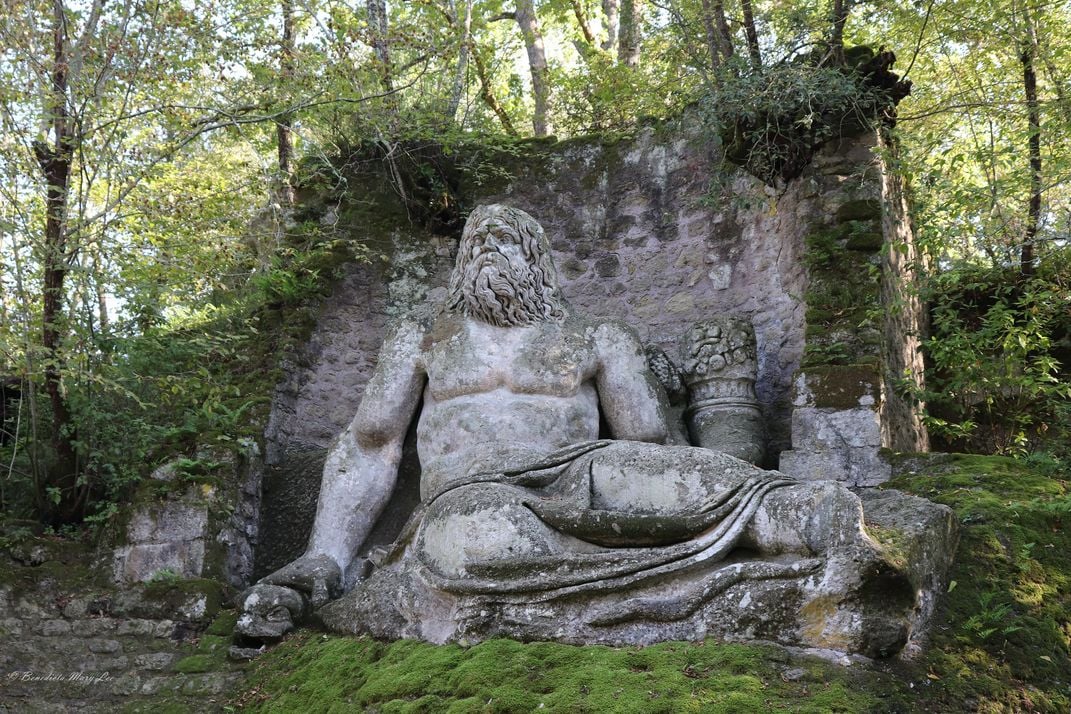
A statue of Neptune, the Roman god of freshwater and the sea
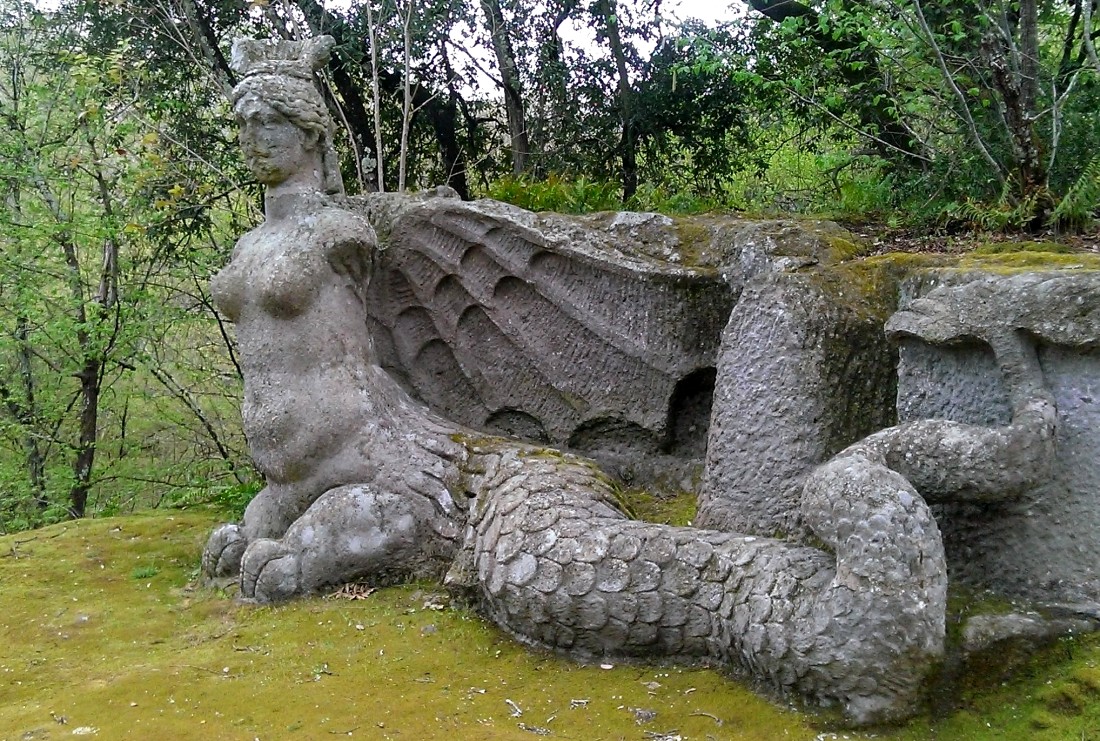
Furia the she-viper, one of Sacro Bosco’s mythological creatures
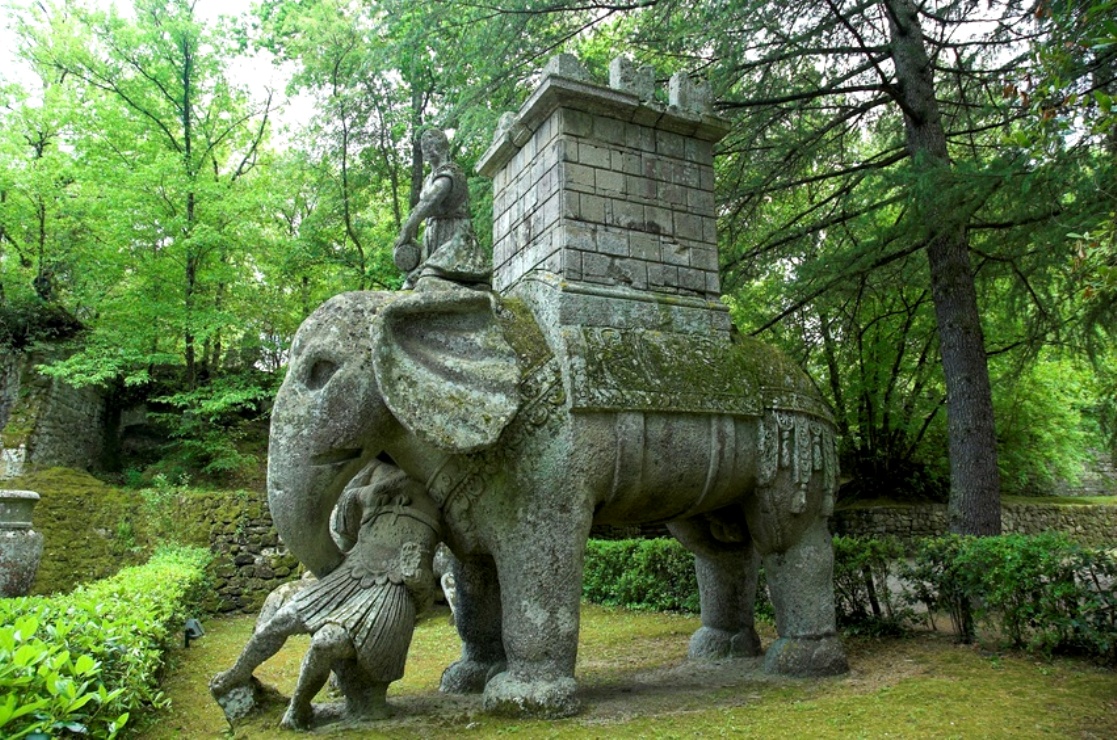
Hannibal's Elephant
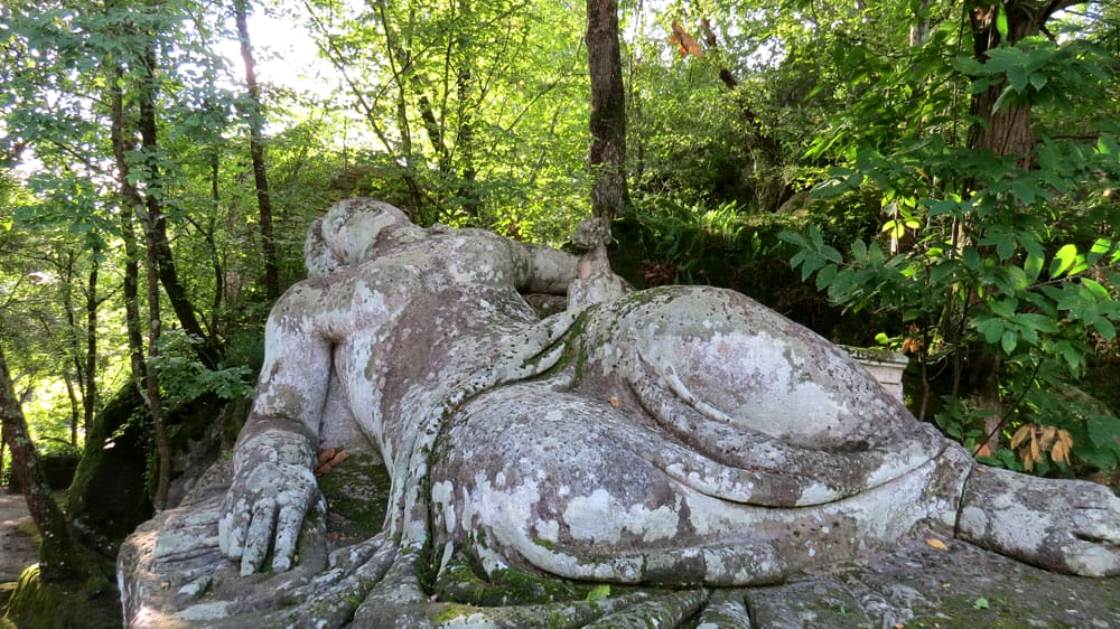
The sleeping nymph
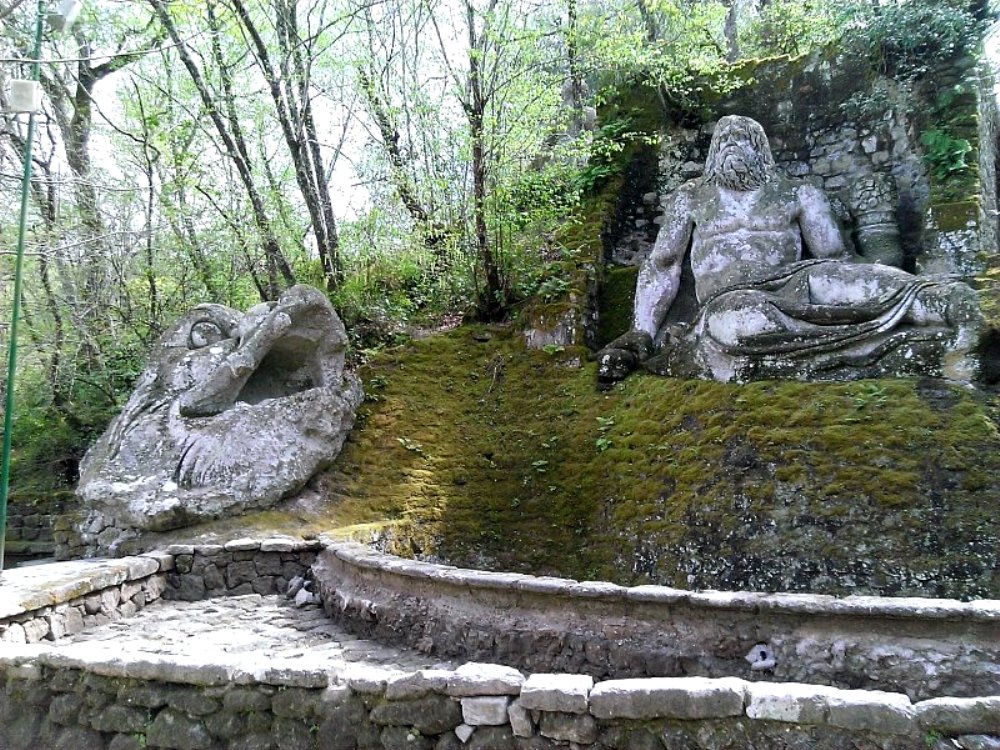
Monster emerging from the sea
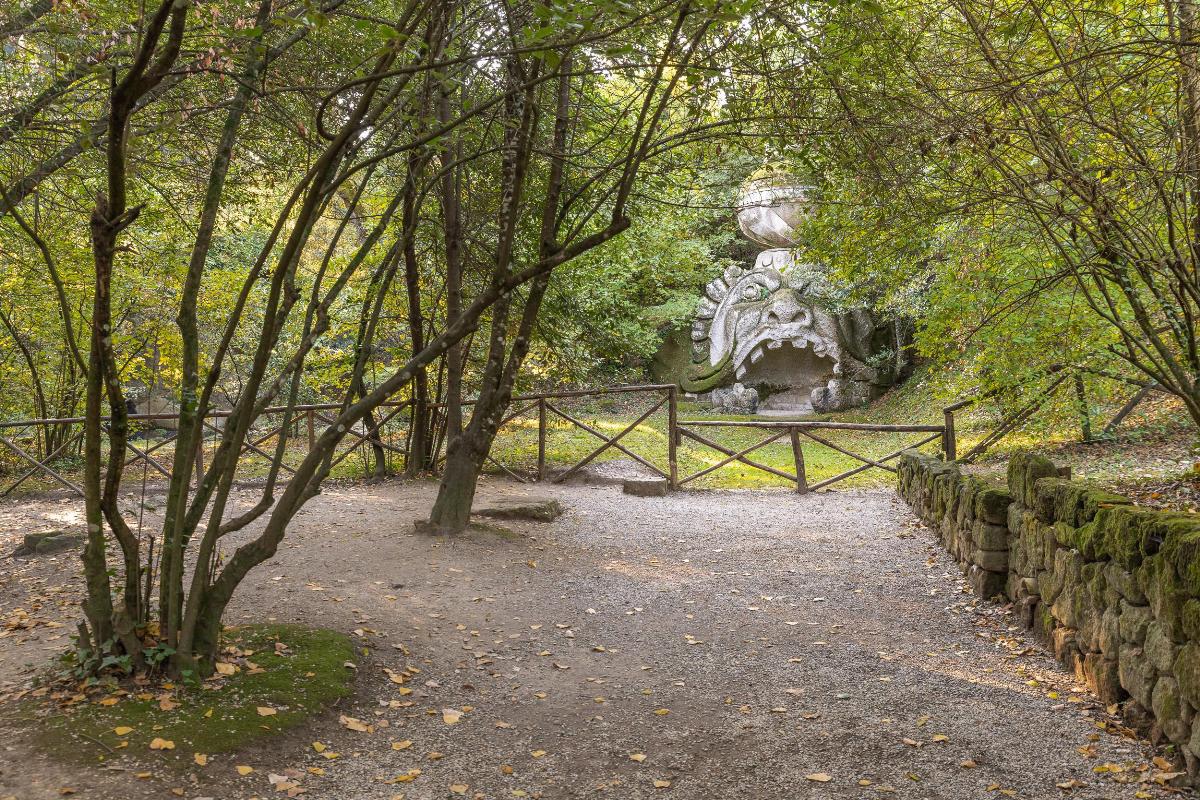
Sacro Bosco has beautiful walking trails